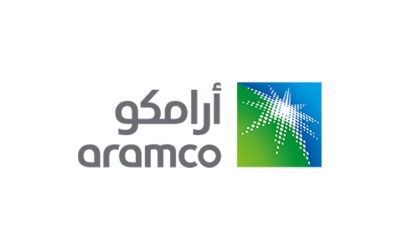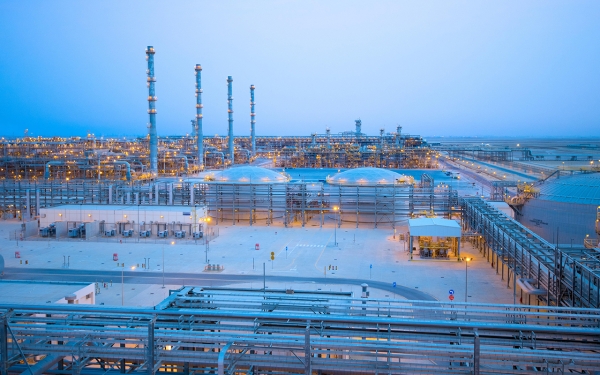
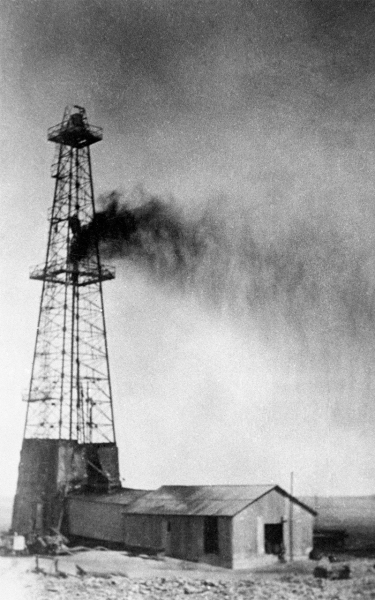
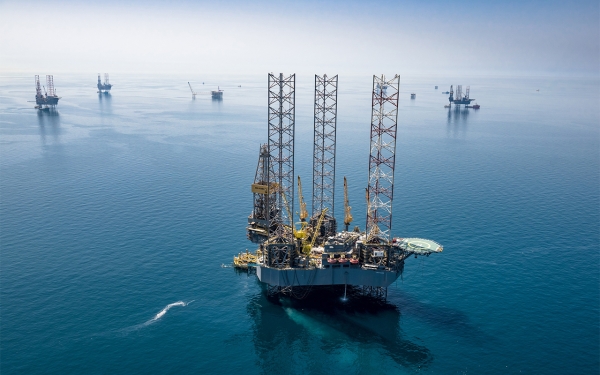
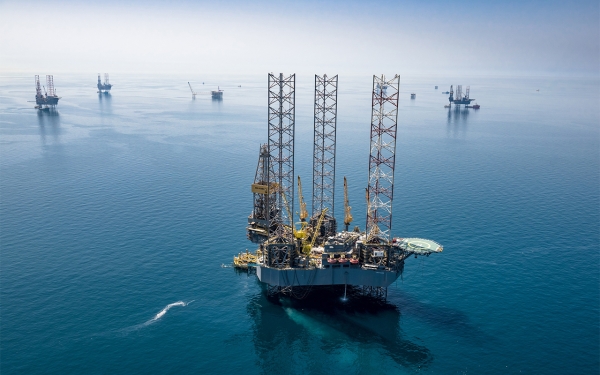
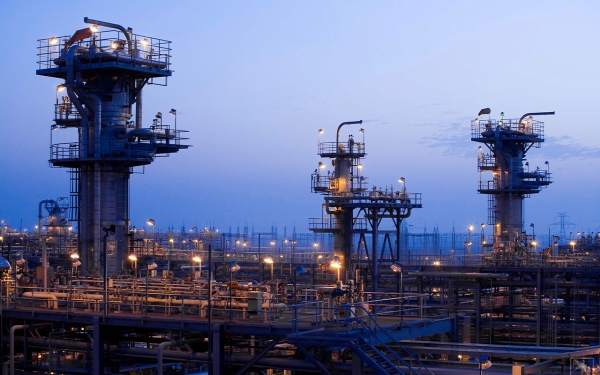
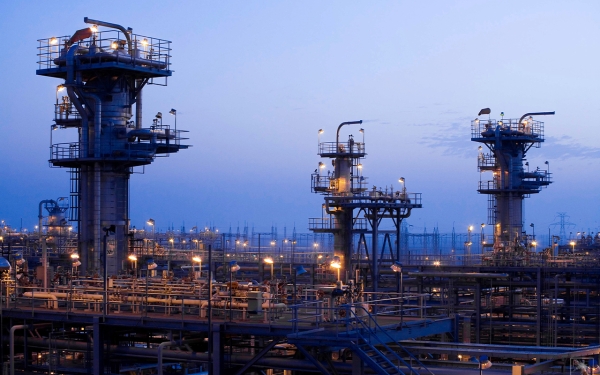
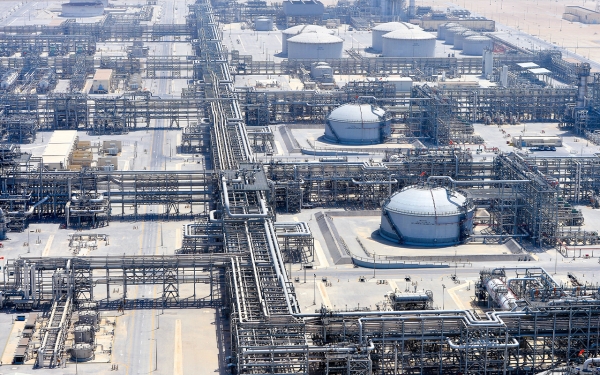
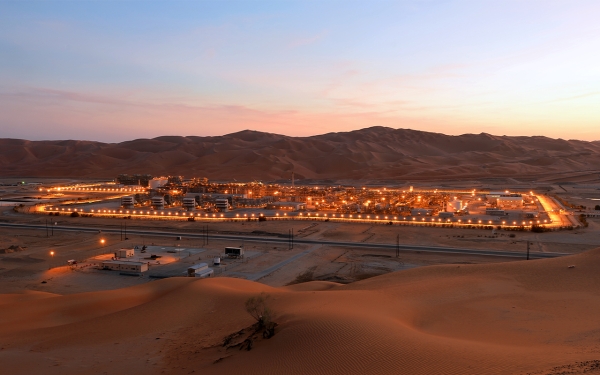
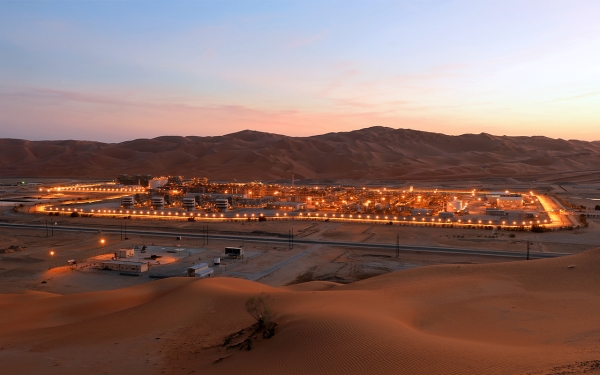
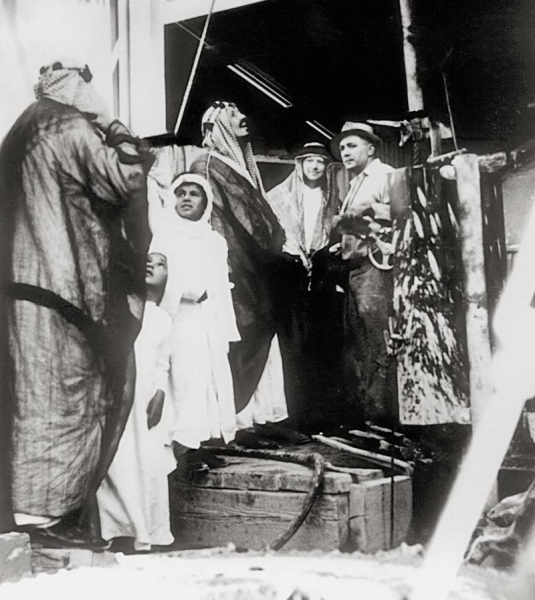
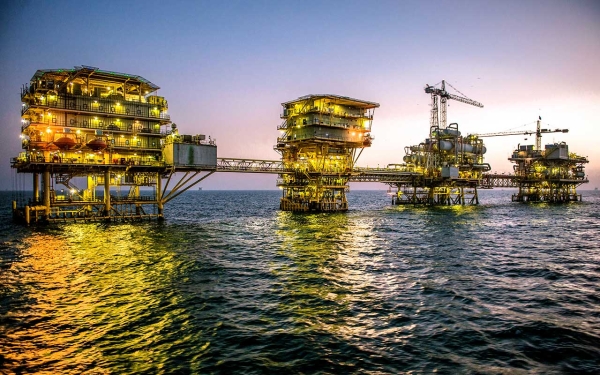
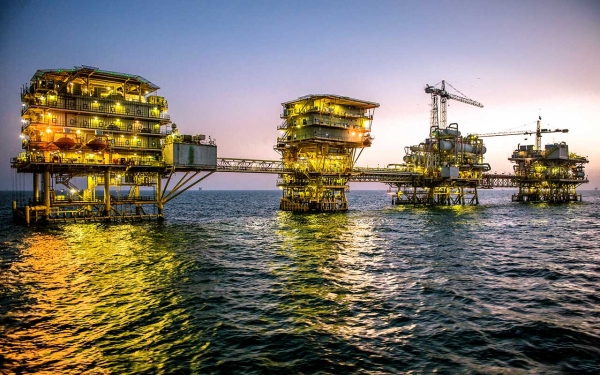
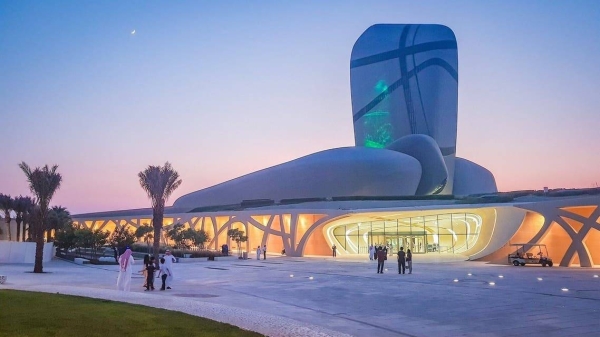

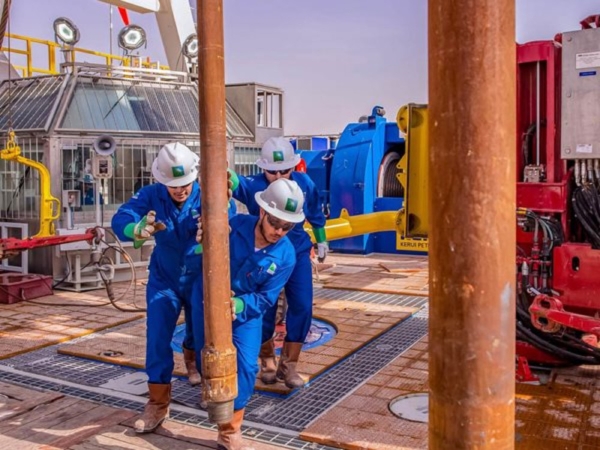
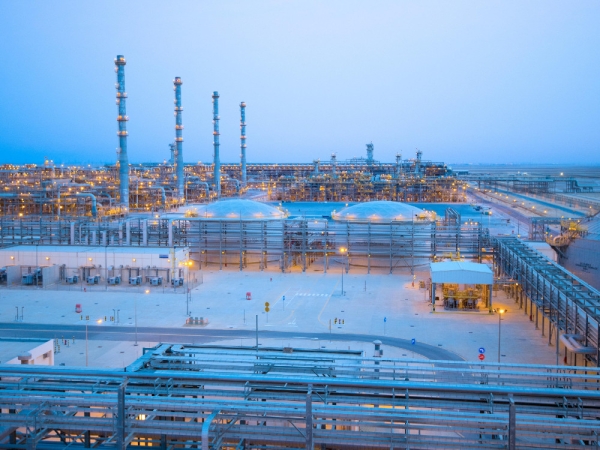
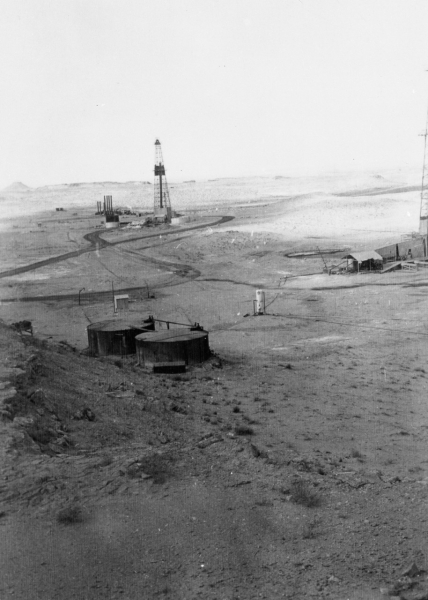
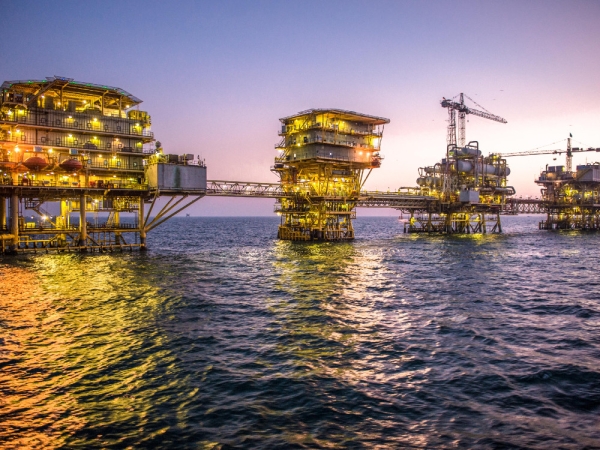
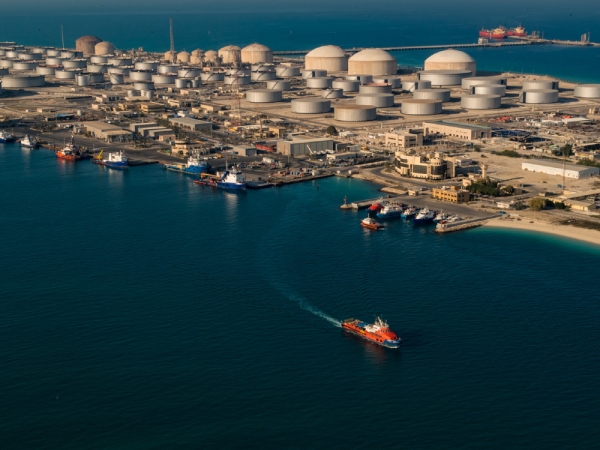
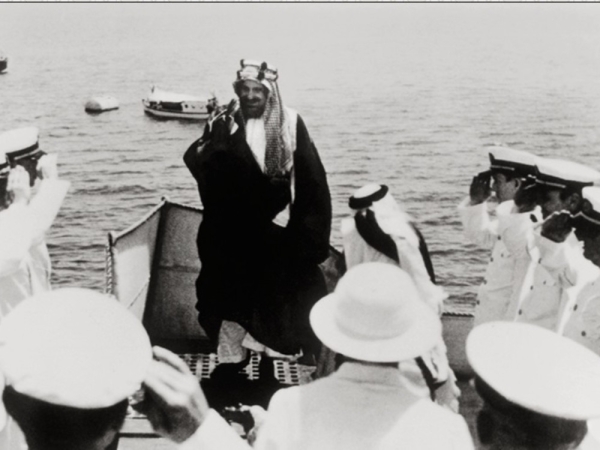
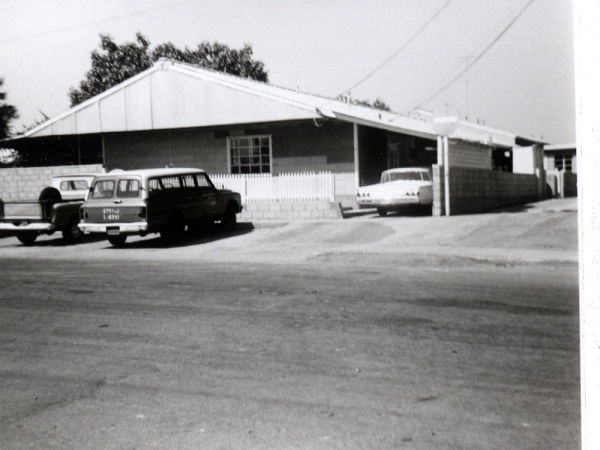
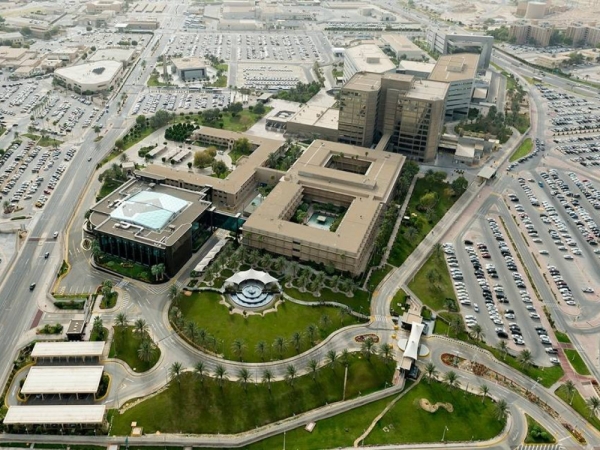

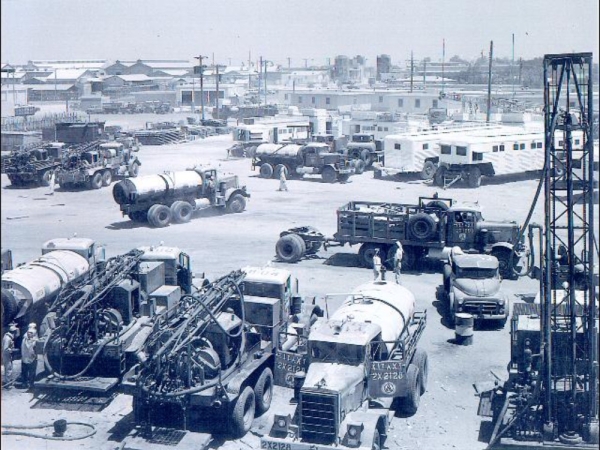
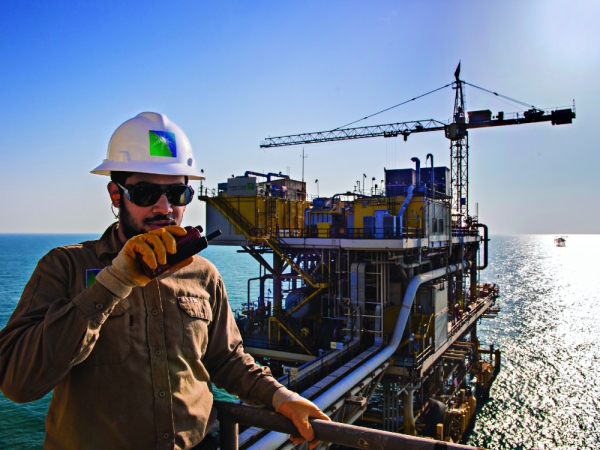

Saudi Aramco is one of the largest integrated energy and chemicals companies in the world. Headquartered in Dhahran, east of the Kingdom of Saudi Arabia, the company produces around twelve million bbl of crude oil daily.
Also known as the Saudi Arabian Oil Company, Saudi Aramco ranks among the largest companies in the world by market capitalization. Its annual revenues rival those of entire nations, making it a cornerstone of the Saudi economy. The company operates across the full production chain, from hydrocarbon extraction to energy generation, including refining and commercial distribution activities.
In 2023, the company celebrated ninety years of exploration and innovation as one of the leading hydrocarbon resource companies in Saudi Arabia.
Through its subsidiaries, the company continues to supply refined products to over 17,000 service stations worldwide. Additionally, it has numerous projects and investments both within and outside Saudi Arabia, in partnership with global companies.
Stages of establishment and formation of Saudi Aramco
Aramco has undergone numerous phases of development and growth since its inception. The journey began in 1933, when Saudi Arabia signed a concession agreement with the American Standard Oil Company of California (SoCal), under the reign of Founding King Abdulaziz Bin Abdulrahman Al Saud. The company’s operations rapidly expanded following the discovery of several onshore and offshore oil fields, which also drove its growth in the distribution sector. Over time, Aramco evolved into a major player on the global energy stage. Below are some of the key historical milestones that have shaped the company's legacy:
Beginning of Aramco with the discovery of oil
During its first decade (1933–1943), Saudi Aramco marked a milestone with the discovery of oil in Saudi Arabia for the first time in 1938, under the reign of King Abdulaziz. Saudi Arabia signed a concession agreement with Standard Oil Company of California (SoCal). Drilling operations commenced in 1935, ultimately leading to the successful production of commercial oil from Dammam No. Seven, known as the "Prosperity Well," in 1938.
On May 1, 1939, the tanker (D.G. Scofield) docked at Ras Tannurah Port. At that time, King Abdulaziz turned the valve to load the first export shipment of crude oil from Saudi Arabia. Production doubled following the discovery of Abqaiq Field in 1940. However, drilling operations were suspended due to the impact of World War II. By 1943, three oil wells had been drilled in the field, with the first well estimated to produce over nine thousand bbl of oil per day. The company's operations continued to grow, and by 1949, oil production had reached five thousand bbl per day.
Completion of the longest oil pipeline in the world
Between 1950 and the 1960s, Aramco experienced a period of rapid growth marked by the discovery of additional onshore and offshore oil fields and an expansion of its operations in the distribution sector. In 1950, Aramco completed the 1,648-km Trans-Arabian Pipeline (Tapline), linking Saudi Arabia’s Eastern Province to the Mediterranean Sea and significantly cutting the time and cost of exporting oil to Europe. In 1951, the company discovered the Safaniya Field, the largest offshore oil field in the world. By 1958, Aramco’s daily oil production had surpassed one million bbl, and by the 1960s, it had produced a total of five billion bbl of crude oil.
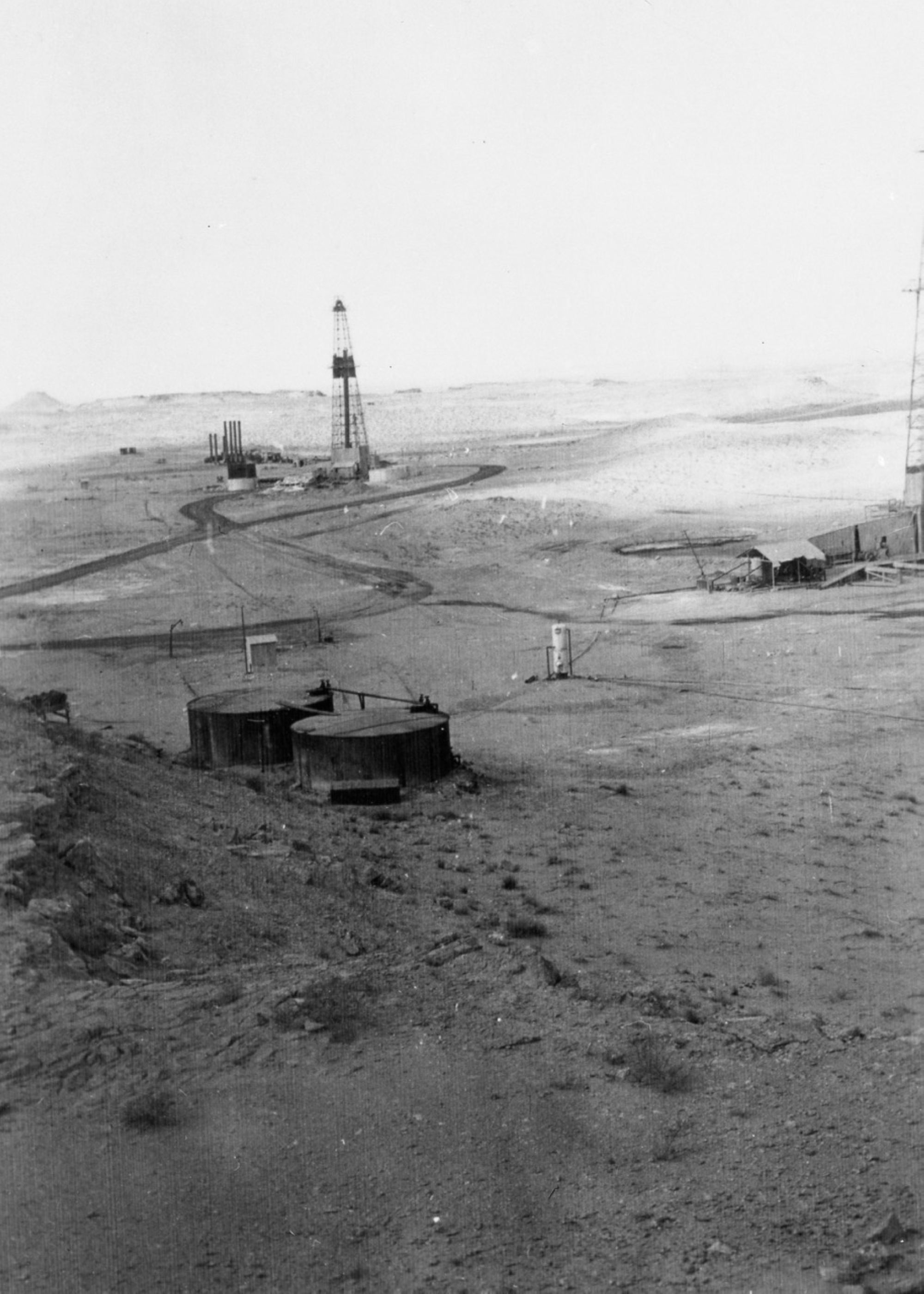
Saudi government's full ownership of Saudi Aramco
The Saudi government began acquiring stakes in Aramco following the company's historic production levels, gradually taking control between 1973 and 1980. In 1973, it purchased a 25 percent stake, which it increased to 60 percent in the following year. In 1971, a record was set in shipments from Ras Tannurah, as shipments of crude oil and petroleum products from Ras Tannurah exceeded one billion bbl in a year for the first time. In 1977, the company began operations at Berri Gas Plant.
Saudi Arabia's efforts in gradually acquiring the entire company continued, until it fully owned it in 1980. Eight years later, Saudi Arabia officially established Saudi Arabian Oil Company 'Saudi Aramco' by Royal Decree issued by King Fahd Bin Abdulaziz Al Saud. This new company took on all the responsibilities of Aramco. The first Saudi president of the company was Engineer Ali Bin Ibrahim Al-Naimi in 1984, who later became the president of Saudi Aramco and its senior executive in 1988.
In 1989, Saudi Aramco began its transformation from a producing and exporting oil company into an integrated oil company coinciding with the establishment of Aramco to Star Enterprises in 1989, in partnership with Texaco in the United States. Later, Saudi Aramco acquired it to become the sole owner of the largest crude oil refining refinery in one location in North America, in Port Arthur, Texas.
Phase of Aramco's global expansion
During the 1990s, Saudi Aramco worked on expanding and achieving a global presence by gradually strengthening its relationships and partnerships worldwide. In 1991, it acquired a 35 percent stake in the SsangYong Oil Refining Company (S-Oil) in South Korea. Additionally, in 1994, it acquired a 40 percent stake in Petron Corporation, a major oil refining and marketing company in the Philippines.
In 1996, the company executed a joint European project by acquiring a 50 percent stake in the Greek refining company Motor Oil (Hellas) Corinth Refineries S.A. and its marketing subsidiary Avinoil Industrial Commercial and Maritime Oil Company S.A.
By 1998, the company managed to overcome numerous obstacles and complete the entire Shaybah Field project. This project took approximately fifty million work hours and involved moving around thirteen million m³ of sand. The reserves of the Shaybah Field alone became capable of supplying the world's oil needs for over 160 days and Europe's needs for over two years.
Phase of Aramco's harnessing of modern technology
Since the beginning of the millennium, Saudi Aramco has embraced the use of advanced technologies to expedite its operations and aid in crude oil discovery. In 2000, the company established the Research and Development Center in Dhahran, which serves as a hub for a network of research centers spread throughout the world. These centers work to achieve breakthroughs that contribute to increasing discovery and extraction rates, reducing costs, enhancing safety, and preserving the environment.
In 2010, the company announced its proprietary reservoir simulation technology using a billion-cell information grid, known as 'GigaPowers.' Six years later, the company developed 'TeraPowers,' which is the first reservoir simulation system using a trillion-cell grid in this field.
Saudi Aramco in the modern era
As the second millennium began, Saudi Aramco worked towards realizing its vision of transforming into a leading integrated energy and chemicals company globally. In October 2011, it launched the Sadara project in partnership with Dow Chemical Company of the United States. The project is a fully integrated chemicals complex and an integrated isocyanates site.
Saudi Aramco has invested in technological solutions aimed at increasing the efficiency of oil production and consumption while reducing their environmental impact. In 2015, the company pledged to reduce the intensity of greenhouse gas emissions. In October 2021, Saudi Aramco announced its ambition to achieve net-zero emissions of greenhouse gases within scopes one and two across all facilities and assets operated and owned entirely by the company by 2050.
In 2019, Saudi Aramco transformed into a public joint-stock company, as it offered its shares for public subscription for the first time on the Saudi Exchange "Tadawul". The offering comprised approximately 3.45 billion shares, equivalent to 1.73 percent of the company's capital.
In 2020, Saudi Aramco acquired a 70 percent stake in the Saudi Basic Industries Corporation (SABIC) for SAR259.1 billion (USD69.1 billion). On February 13, 2022, eight billion ordinary shares, representing 4 percent of Saudi Aramco's shares, were transferred to the Public Investment Fund (PIF).
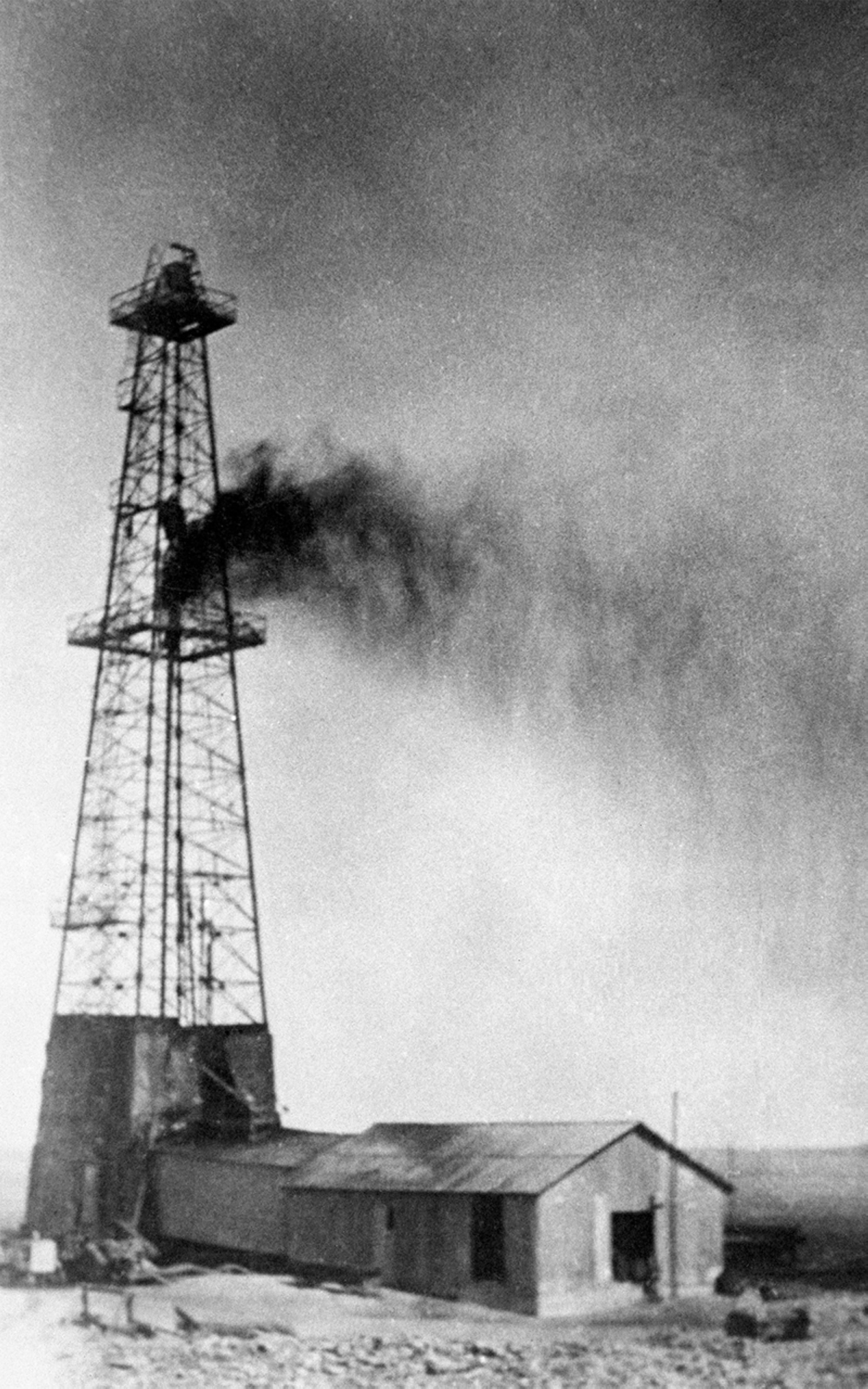
Name and headquarters of Saudi Aramco
Naming Saudi Aramco
The American company Standard Oil of California (SoCal) obtained the petroleum exploration concession in Saudi Arabia in 1933. Two years before its discovery of oil in commercial quantities, it partnered with Texas Oil Company in the exploration concession. In 1938, the company announced the discovery of oil in quantities suitable for investment. In 1944, the company changed its name to Arabian American Oil Company, from which its abbreviated name Aramco was derived, and it remained under this name until a Royal Order was issued in 1988, changing the company's name to Saudi Arabian Oil Company (Saudi Aramco).
A timeline of the stages in naming Saudi Aramco:
- 1933
Standard Oil of California (SoCal)
- 1944
Arabian American Oil Company (Aramco)
- 1988
Saudi Arabian Oil Company (Saudi Aramco)
Saudi Aramco headquarters
Saudi Aramco is headquartered in Dhahran City, in the Eastern Province of Saudi Arabia. With a workforce of over seventy thousand male and female employees, the company operates both domestically and internationally. It is guided by a strong governance framework and a solid organizational structure that promote transparency, effective oversight, and accountability across all levels of its operations.
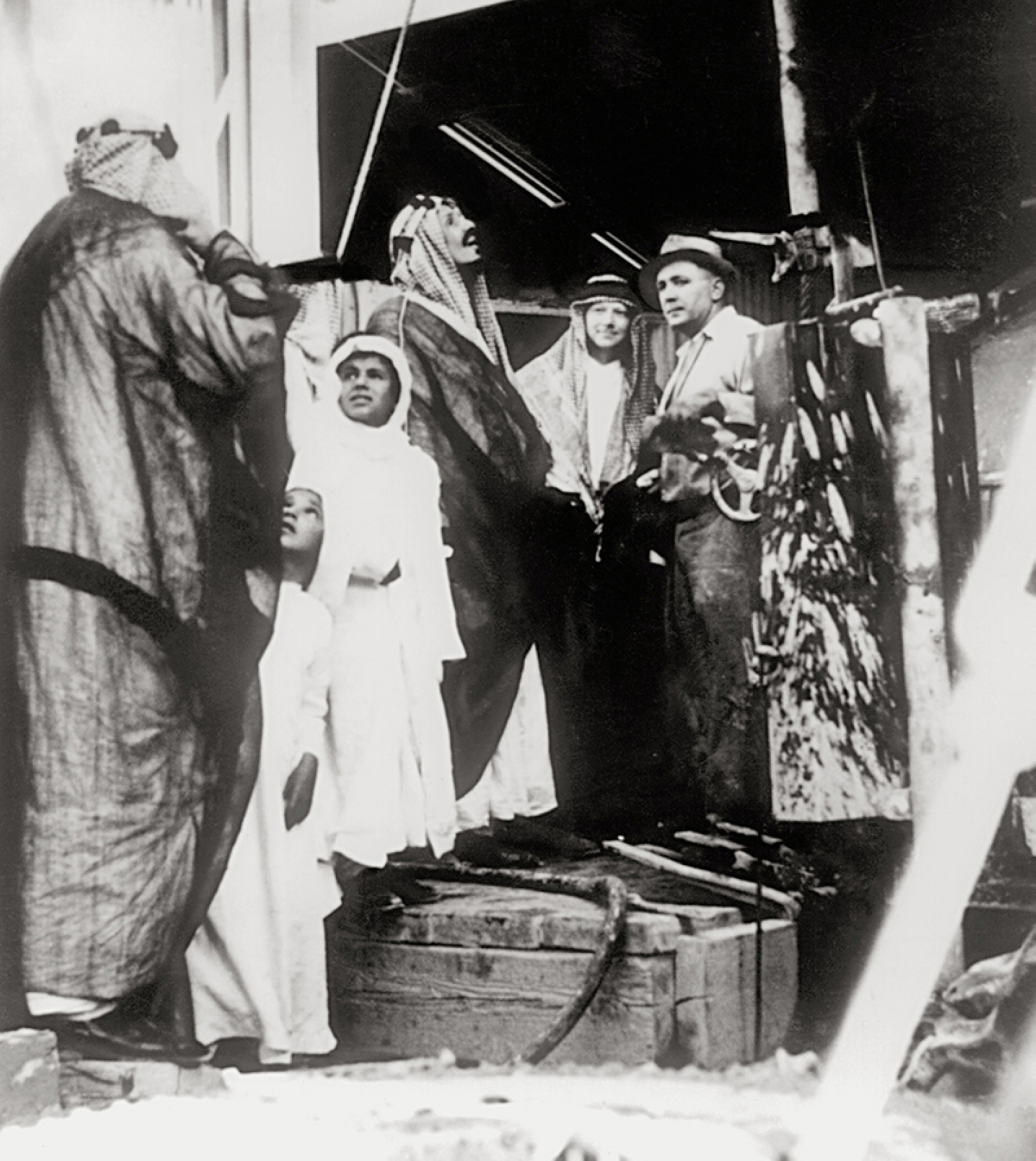
Role of King Abdulaziz in the establishment of Saudi Aramco
Founding King Abdulaziz Bin Abdulrahman Al Saud showed great interest in the oil exploration project in Saudi Arabia's territories. He closely monitored the development of the activities of the Standard Oil Company of California (SOCAL) in the Eastern Province, with which the Saudi government signed an agreement for oil exploration. The king maintained continuous communication with officials of the company to be informed about its achievements and to ensure the progress of the work. On May 31, 1939, King Abdulaziz approved the signing of an additional agreement to expand the area granted to the company, granting it the concession of oil exploration within it.
On December 30, 1950, another supplementary agreement was signed with the company regarding its compliance with government taxes. King Abdulaziz's oversight of the oil exploration project was not limited to regulatory and legal aspects; it extended to continuous meetings with officials of the company and field visits to its facilities.
First royal visit to Aramco
The first official visit of King Abdulaziz to Aramco and its facilities took place on April 28, 1939, in a procession comprising more than four hundred cars. The visit program included inspecting the company's facilities in Dhahran and Ras Tannurah, and the founder inaugurated the route for transferring oil to the first ship that exported Saudi oil abroad.
Second royal visit to Aramco
In 1947, eight years after King Abdulaziz's first visit, he decided to visit Aramco for the second time to inspect its facilities and learn about its status. This visit was distinguished from the first by being extensively documented through a report prepared by a committee of historians tasked with documenting the visit. The report was titled: (Report on King Abdulaziz Al Saud's Visit to the Arabian American Oil Company, January 1947). The visit lasted for five days, during which he reviewed the progress of the Arabian American Oil Company (Aramco), which had achieved significant results in oil exploration and commercial exportation at that time.
The visit schedule to the company included an inspection tour of Dhahran, which encompassed a visit to the new brick-making site owned by the company, followed by a visit to Al-Muazen area passing by Well No. Seventeen, then heading to the company's industrial area. The following day, there was a tour of Ras Tannurah, including inspection tours of the company's refinery and maritime shipping facilities.
Saudi Aramco IPO
For years, Saudi Aramco remained closely tied to the Saudi government. During the reign of the Custodian of the Two Holy Mosques, King Salman Bin Abdulaziz Al Saud, the first indication was made in the media about the possibility of an IPO for Saudi Aramco. At that time, the primary documents for establishing Aramco during the reign of King Abdulaziz were circulated, indicating that the company was being prepared for market listing at that time.
Saudi Aramco IPO
The company’s Articles of Association were ratified by a Council of Ministers Resolution in 2017. A major turning point followed when Crown Prince, Prime Minister, and Chairman of the Council of Economic and Development Affairs, His Royal Highness Prince Mohammed Bin Salman Bin Abdulaziz announced the company's readiness for its initial public offering (IPO). On December 11, 2019, Saudi Aramco offered a portion of its shares for public subscription. These shares were listed on the main market of the Saudi Exchange "Tadawul" with approximately 3.45 billion shares, equivalent to 1.73 percent of the company's capital.
Saudi Aramco Secondary Public Offering
Saudi Aramco launched the secondary public offering of ordinary shares on June 2, 2024. The offering consisted of 1.545 billion shares, accounting for about 0.64 percent of the company’s total issued shares, with the share price ranging between SAR26.7 and SAR29.
On June 7, 2024, the final offering price for both institutional and individual subscribers was set at SAR27.25 per share, determined through the bookbuilding process.
A total of 1,331,915 individual subscribers participated in the offering, receiving 10 percent of the available shares, while the remaining 90 percent were allocated to institutional investors.
Based on the final share allocation, international institutional investors received approximately 0.73 percent of the issued shares, local institutional investors around 0.89 percent, and individual subscribers approximately 0.76 percent.
The remaining 97.62 percent of issued shares were held by other shareholders, including the Saudi government. Other shareholdings include shares owned by the government; shares acquired by or transferred to government-owned entities, subsidiaries, and affiliates from the government; shares held by company executives, directors, and other individuals who would typically be considered as insiders; and 163,758,663 shares held in treasury.
On June 11, 2024, Saudi Aramco announced the successful completion of its secondary public offering of ordinary shares, with all 1.545 billion offering shares, representing approximately 0.64 percent of the company’s issued shares, sold through the offering. This offering marked the largest secondary offering in the Europe, Middle East, and Africa region since 2000, and the largest share offering in the Middle East following the company’s IPO in 2019.
Transfer of a portion of Aramco's shares to the PIF
On February 13, 2022, Crown Prince Mohammed Bin Salman announced the transfer of eight billion ordinary shares, or 4 percent of the shares of Saudi Aramco, to the Public Investment Fund (PIF). This transfer of shares is part of Saudi Arabia's long-term strategy aimed at supporting the restructuring of the national economy, in line with Saudi Vision 2030.
On March 7, 2024, Crown Prince Mohammed Bin Salman announced that 8 percent of Saudi Aramco’s total issued shares had been successfully transferred from state ownership to portfolio companies fully owned by the Public Investment Fund. As a result of this transfer, the state now holds 82.186 percent of the company’s total shares.
Even after the transfer of those shares, Saudi Arabia remains the largest shareholder in Saudi Aramco, owning more than 82 percent of the company's total shares.
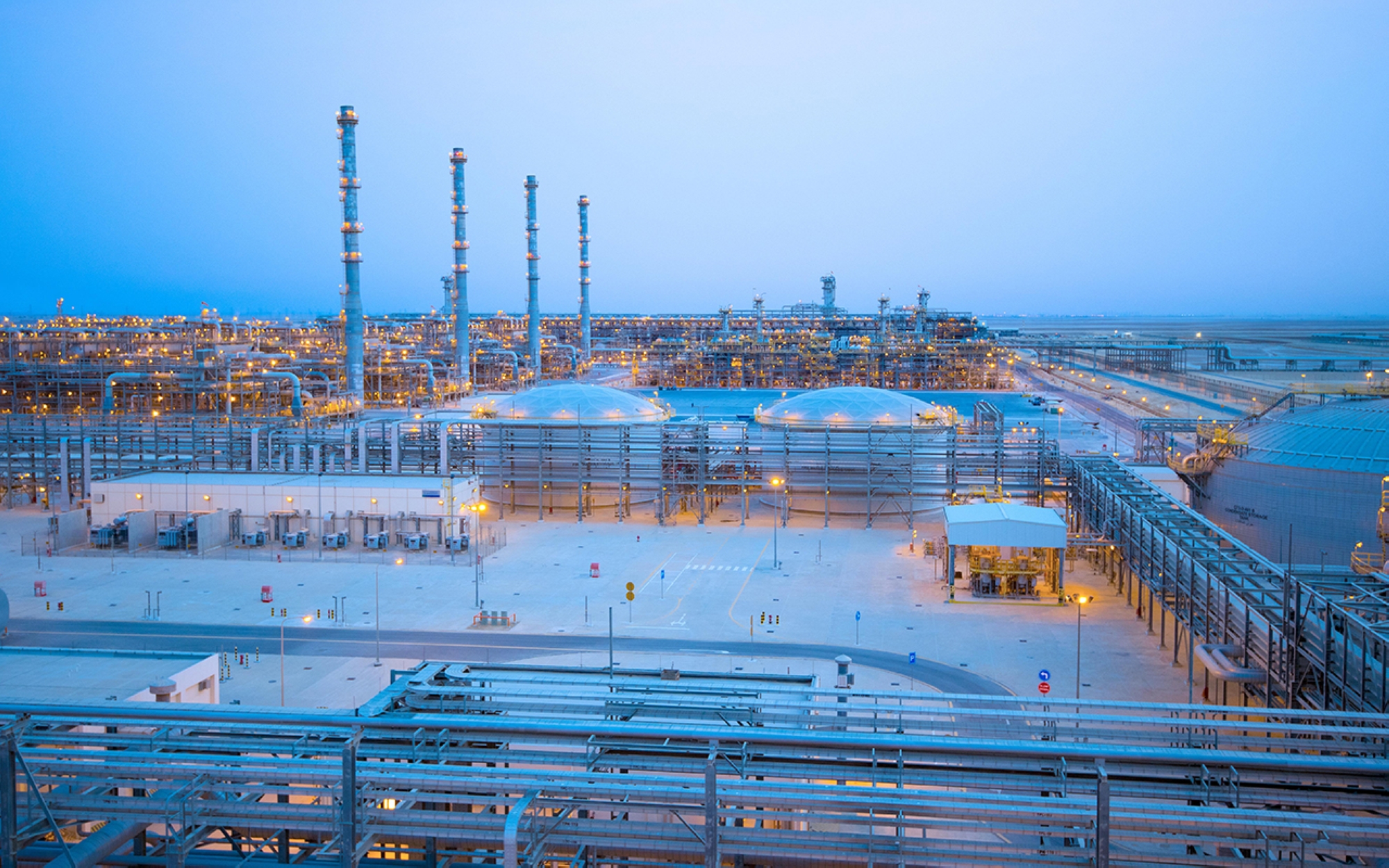
Production of Saudi Aramco
Saudi Aramco manages the hydrocarbon reserves base in Saudi Arabia, focusing on increasing production rates and maximizing value in the long term. The total hydrocarbon reserves amount to 258.8 billion bbl of oil equivalent, with a total hydrocarbon production of 13.6 million bbl of oil equivalent per day. Its sustainable maximum production capacity reaches twelve million bbl per day, with a total crude oil production of twelve million bbl per day. The company began investing in natural gas in the mid-1970s and is a pioneer in gas extraction and supply globally and domestically. It distributes gas products through a pipeline network covering various parts of Saudi Arabia. Below is a breakdown of Saudi Aramco's production:
Crude Oil
Saudi Aramco is a major producer of crude oil with the lowest cost in the world and produces five main types of crude oil: Arab Heavy, Arab Medium, Arab Light, Extra Light Arab, and Arab Super Light. These types cover demand in most global markets. According to Aramco's annual report for 2022, the company maintained sustainable maximum production capacity at twelve million bbl per day of crude oil as of December 31, 2022. The total reserves of crude oil and condensates held by the company amounted to 200.8 billion bbl. Regarding exports, crude oil exports reached 7.1 million bbl per day.
Regarding crude oil production, the Saudi government is responsible for determining its production ceiling, exercising its sovereign rights. Saudi Aramco is obligated to maintain the level of sustainable maximum production capacity, exceeding its current production capacity, in compliance with the hydrocarbon regulations and in accordance with the government's directives to increase sustainable maximum production capacity to thirteen million bbl per day. Meanwhile, Saudi Aramco continues to advance in implementing its plans aimed at gradually reaching sustainable maximum production capacity through several projects to increase production.
Gas
Saudi Aramco is one of the major gas producers in the world. In 1975, the main gas network was established, comprising a vast network of pipelines connecting key gas production and processing sites across Saudi Arabia. Since its establishment over four decades ago, it has contributed to enabling one of the major gas markets globally and has worked towards transforming the national energy mix into clean fuel, laying the foundation for a manufacturing-based economy.
Saudi Aramco is the sole supplier of gas in Saudi Arabia. The growth in local gas demand is attributed to electricity generation, water desalination, and petrochemical production. Moreover, natural gas is utilized beyond energy generation, serving as a primary intermediary material for producing ammonia used in fertilizer production and blue hydrogen production. Saudi Aramco's gas processing facilities include Berri Plant, Fadhili Plant, Harad Plant, Hawiyah Plant, Khursaniyah Plant, Midyan Plant, Shedgum Plant, Shaybah Plant, Uthmaniyah Plant, Wasit Plant, and the Northern Saudi Arabia, which marks the beginning of unconventional gas projects in Saudi Arabia.
Saudi Aramco's gas fields and reservoirs are characterized by their richness in liquids and condensates, complementing crude oil production and providing feedstock for the refining and petrochemical sectors. According to Saudi Aramco's 2022 report, the company's production of natural gas liquids reached 25.2 billion bbl, while its production of natural gas amounted to 201.9 trillion standard ft. Saudi Aramco has increased its daily gas processing capacity from two billion standard ft per day in 2000 to 18.3 billion standard ft per day in 2022. The company also achieved a new level of daily production rates for natural gas and ethane, reaching 10.6 billion standard ft per day. Additionally, the company set a historic record for natural gas production in a single day, reaching 11.3 billion standard ft. Aramco owns massive reserves of high-quality gas with exclusive rights to supply the rapidly growing local market. The natural gas reserves amount to 246.7 trillion standard ft.
Chemicals
In 1998, Saudi Aramco began its operations in the chemical sector. Its current scope of activities in the chemicals sector includes the production of basic chemicals such as aromatics, olefins, and polyolefins, as well as advanced products like polyols and synthetic rubber. The chemical products produced by the company are used in numerous daily applications and cater to various sectors, such as packaging, automotive, footwear, and household appliances.
The global network of refineries and petrochemical businesses provides secure outlets for marketing crude oil in strategic markets. Saudi Aramco conducts its petrochemical industry operations through its subsidiaries within Saudi Arabia and in China, Japan, South Korea, Malaysia, the United States, and the Netherlands, in collaboration with other leading companies in the sector such as Dow Chemical (Sadara), ExxonMobil (Samaref), Sinopec (Yasref), Sumitomo (Petro Rabigh), and Total (Satorp).
Saudi Aramco holds a leading position as one of the major energy and chemical companies. After acquiring 70 percent of SABIC, a global company in the field of diversified chemical manufacturing, and following the completion of the SABIC deal, Saudi Aramco's chemical sector now operates in more than fifty countries. The net energy production capacity of chemical materials in Saudi Aramco reached 56.3 million t annually in 2022, up from 54.2 million t annually in 2021.
Base oils and lubricants
Saudi Aramco is one of the major base oil marketing companies globally. In 2022, Saudi Aramco's sales of base oils reached 4.6 million t, compared to 4.5 million t in 2021. Saudi Aramco comprises three main companies for the production and marketing of base oils: Luberef, Motiva, and S-Oil.
Retail fuel sales
Saudi Aramco injects high-quality fuel into the local market in Saudi Arabia to serve the industrial, automotive, residential, and commercial sectors. The company operates according to a retail fuel sales strategy that focuses on enhancing its presence in Saudi Arabia to serve its long-term goal of becoming one of the major retail fuel companies globally.
In 2019, the company focused on developing its service stations sector by entering into a joint venture with Total to operate service stations within Saudi Arabia. The two companies also entered into an agreement to acquire 270 service stations branded as (Sahel).
Saudi Aramco's plants
Saudi Aramco owns several major gas plants, including the Fadhili Plant, which was opened in 2020. It is a plant for processing non-associated gas from onshore and offshore fields. The Gas Plant in Berri, opened in 1977, serves as a facility for the main extensive gas network project. Following it is the Gas Plant in Shedgum, inaugurated in 1980, where a large set of equipment is utilized for gas processing.
The company's gas plants also include the Uthmaniyah Gas Plant, one of the largest gas processing facilities in the world, which commenced production in 1981. The Gas Plant in Hawiyah, inaugurated in 2001, is a facility built for processing non-associated gas. Following that is the Gas Plant in Harad, established as part of the expansion of the main gas network in 2003.
There is also the gas plant and natural gas liquids fractionation plant in Wasit, both of which commenced operations in 2015. They are among the gas plants built in history. The gas plant in Khursaniyah, inaugurated in 2009, has the capacity to process around one billion standard ft³ per day. Additionally, there is "Madin," located in Tabuk Province.
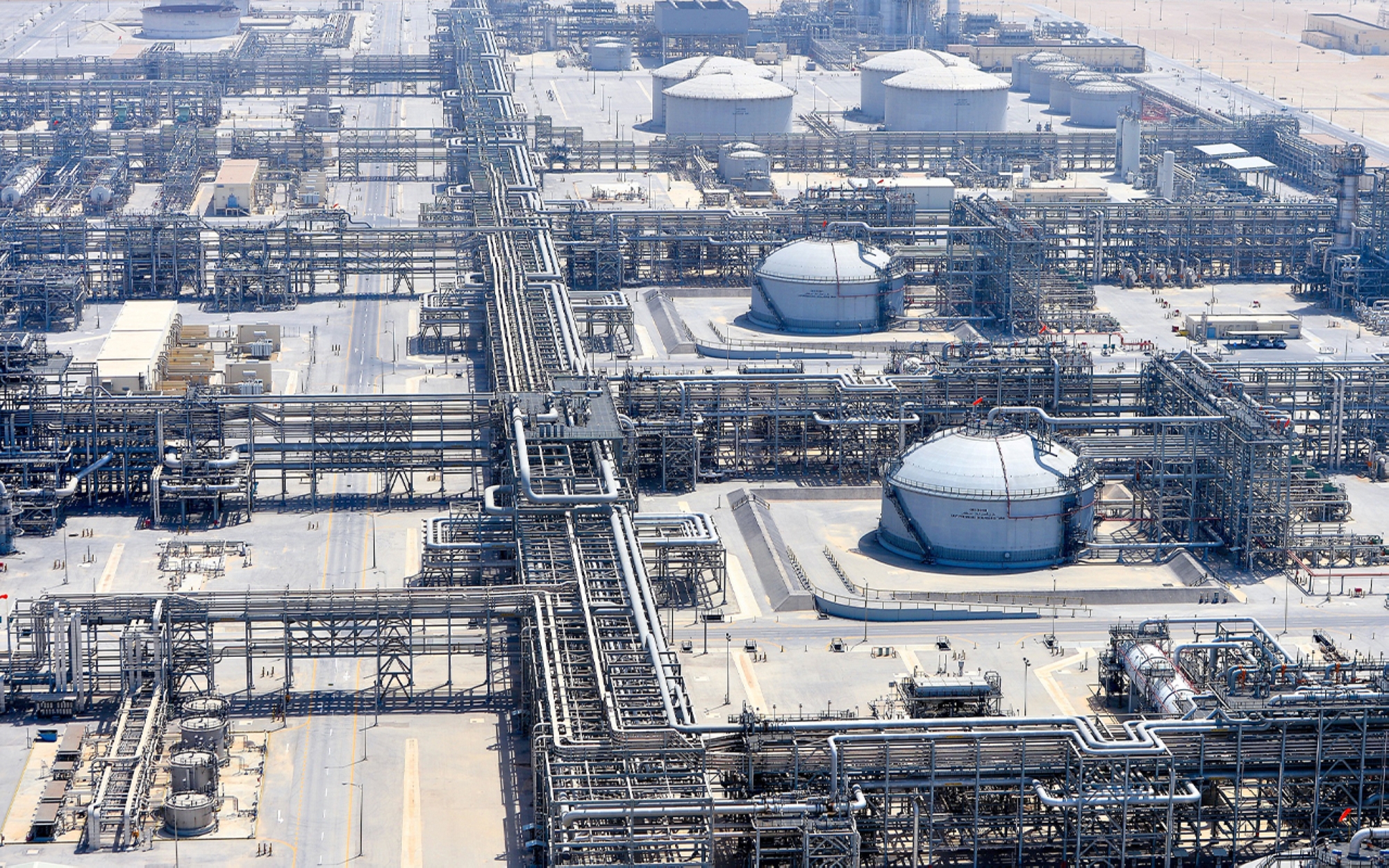
Saudi Aramco's oil stations
Saudi Aramco operates several major oil stations, including Abqaiq, which represents a significant facility for oil processing and a crude oil stabilization plant. It is also the third facility of Saudi Aramco to be listed in the World Economic Forum's recognized global "Lighthouse" facilities. Abqaiq provides approximately 5 percent of the world's oil supply. It produces Arab Light crude oil and Arab Extra Light crude oil with a production capacity exceeding seven million bbl per day. It encompasses three primary processing operations: crude oil processing, natural gas liquids, and utilities.
In the year 2018, the Ghawar Field was the largest oil field in the world in terms of proven conventional reserves, which reached 58.32 billion bbl of oil equivalent. Its production exceeds half of Saudi Arabia's total cumulative crude oil production. The Ghawar Field comprises six main areas: Farzan, Ain Dar, Shedgum, Uthmaniyah, Hawiyah, and Harad. The Shaybah Field was discovered in 1968 and is located in Al-Rub' Al-Khali (Empty Quarter). In 2016, the company worked on a project to increase production from the Shaybah Field by 250,000 bbl per day, thereby raising the total production capacity in the field to one million bbl per day of Arab Extra Light crude oil.
Saudi Aramco's oil stations also include the Khurais Complex, which spans approximately 106 km and consists of the Abu Jifan and Mazalij fields. The Khursaniyah Field, which commenced production in 2008, included a development program that incorporated facilities for processing and stabilizing five hundred thousand bbl of Arab Light crude oil blend.
The Manifa Field, discovered in 1957, is considered one of the giant projects undertaken by the company. It was nominated for the UNESCO Environmental Responsibility Award. The field's production includes nine hundred thousand bbl per day of Arab Heavy crude oil, ninety million standard ft per day of associated gas, and 65,000 bbl per day of hydrocarbon condensates.
The company's fields also include the Nuaim Field, which began production in August 2009. Located to the south of Riyadh Province, it marks the beginning of production facilities in the central province of Saudi Arabia. As for Al-Qatif Field, it is a facility that produces Arab Light crude by blending Arab Extra Light, Light, and Medium crudes.
Another oil field managed by the company is the Safaniya Offshore Field, which holds significant proven reserves. It stretches for about fifty km in length and fifteen km in width within the concession area. In the Arabian Gulf, approximately two hundred forty km north of the city of Dhahran, lies the Zuluf Field, which contains two main formations: Zuluf and Rabian.
Saudi Aramco's presence in global energy markets
Saudi Aramco has made a positive impact in the global energy market, establishing a strong presence in the three major energy markets: Asia, Europe, and North America. In Asia, it is the main supplier of crude oil to six major markets, including China, including Taiwan province, India, Japan, South Korea, and the Philippines.
Saudi Aramco subsidiaries in Europe provide support through a network of offices offering a range of services, including financial support, technical expertise, supply chain management, and a variety of administrative support services.
In North American energy markets, the company provides various services through its subsidiaries there, including commodities and services, economic and political analysis, and arrangements for storage, transportation, and delivery of crude oil sold by Saudi Aramco or Saudi Refining, Inc. to refineries in the United States.
Global subsidiaries of Saudi Aramco
Saudi Aramco operates a global integrated network that produces refined products, chemicals, and base oils. Through partnerships with global industry leaders at both local and international levels, it provides opportunities for its workforce to develop or acquire new technologies.
Hyundai Oil Bank, wholly owned by Saudi Aramco, is part of Hyundai Heavy Industries Holdings. Established in 1964, Hyundai Oil Bank is a private oil refining company in South Korea. It specializes in refining crude oil, producing base oils and petrochemicals, and operates a network of fuel stations. Investments in Hyundai Oil Bank support Saudi Aramco's growth strategy in the refining, processing, and marketing sector. This is achieved by expanding its global presence in key markets through profitable integrated refining, chemical, and marketing activities. These initiatives enable Saudi Aramco to sell crude oil and leverage its commercial capabilities.
Motiva Enterprises, a wholly owned subsidiary of Saudi Aramco, owns and operates a chemical plant located in Port Arthur, Texas. Saudi Aramco jointly owns Yanbu Aramco Sinopec Refining Company with Mobil Yanbu Refining Company, a subsidiary wholly owned by ExxonMobil (Samref), working to refine approximately four hundred thousand bbl per day of Arabian Light crude oil.
Idemitsu Kosan Co., Ltd. is part of Saudi Aramco's global network, representing one of its refining and marketing subsidiaries in Japan. Its sales in Japan include gasoline, diesel oil, kerosene, and automotive lubricants, while its international sales encompass aviation and marine fuels as well as lubricants.
Saudi Aramco's Yanbu Aramco Sinopec Refining Company (YASREF), located in Yanbu Industrial City, is a global refinery with a refining capacity of four hundred thousand bbl per day of heavy Arabian crude oil. It has the capability to produce over 13.5 million gal. per day of ultra-clean transportation fuels and a range of other high-value refined products.
Saudi Aramco's interest in innovation and patents
Saudi Aramco has placed significant emphasis on innovation and ideas through its innovation ecosystem, which includes twelve research centers and initiatives such as the Saudi Aramco Entrepreneurship Center "Waed," and the Innovation Center (Lab 7), all of which support local entrepreneurs and Aramco's projects.
According to a report published by Forbes magazine, Saudi Aramco is among the top ten innovative companies in Saudi Arabia. Since its establishment in 1933, the company has acquired approximately one hundred patents until 2010. However, in 2021 alone, the company obtained 864 patents from the United States Patent and Trademark Office, placing it in the first position globally in the oil and gas sector. It also entered the list of the top fifty companies and universities that received patents in that year. In 2022, the company intensified its efforts in research and innovation, with the number of patents increasing to 966.
Social responsibility of Saudi Aramco
Saudi Aramco, under the supervision of the Citizenship Executive Committee, has introduced several social and voluntary initiatives to stimulate intellectual, creative, and economic development in Saudi Arabia and around the world. It has worked on activating its capabilities and dedicating its resources to make a positive and tangible difference in people's lives by creating job opportunities for local communities and empowering them to earn sustainable income.
Local industries
Saudi Aramco has worked on designing a program to enhance the In-Kingdom Total Value Add (iktva) program, aiming to develop a local manufacturing sector that contributes to attracting and establishing local industries related to energy with the ability to compete globally.
Community Development Initiatives
Saudi Aramco has contributed, through initiatives aimed at developing the small industries sector in Saudi Arabia, to assisting individuals in building their economic future and benefiting from traditional crafts and available natural resources.
In 2016, the company launched the coffee bean initiative to support the growth of the local coffee industry in Jazan and Aseer Provinces. Beneficiaries, numbering over a thousand local farmers, received support from Aramco, which included the planting of two hundred thousand seedlings and the provision of modern and smart irrigation systems.
The company also launched the Honey Initiative by producing and developing honey and its by-products in several provinces of Saudi Arabia, including Al-Bahah, Aseer, and Al-Madinah Al-Munawwarah, as well as Taif Governorate. To enhance the initiative, in 2016, it collaborated with several academic partners, including King Khalid University, to establish beekeeping stations. These stations currently produce 120 t of honey annually, with production reaching 150 t per year in 2022.
In the textiles sector, the company launched the Textiles Initiative, collaborating with charitable associations and local institutions to establish a center for training women in sewing skills. Additionally, it initiated the Cosmetics Initiative in Taif Governorate in partnership with Al-Yaqthah Women's Awareness Association and the Kamal Factory for Taif Roses to establish the Roseyar Factory. This initiative resulted in the training and employment of forty women in the factory. Furthermore, the company worked on localizing the industry of products derived from locally cultivated olive oil through the Olive Oil Initiative. It partnered with the Charity Depository Association to establish the "Jufa" factory for producing various products incorporating olive oil, which supports the roles of women in Dumat Al-Jandal in Al-Jawf.
The company undertakes various social, humanitarian, and developmental tasks, including supporting needy families and communities, backing small industries, and providing new and innovative methods for their development. It also spreads culture, knowledge, and arts through "Ithra". Moreover, it offers university and vocational training programs for high school and university students.
Aramco's role in thought and culture
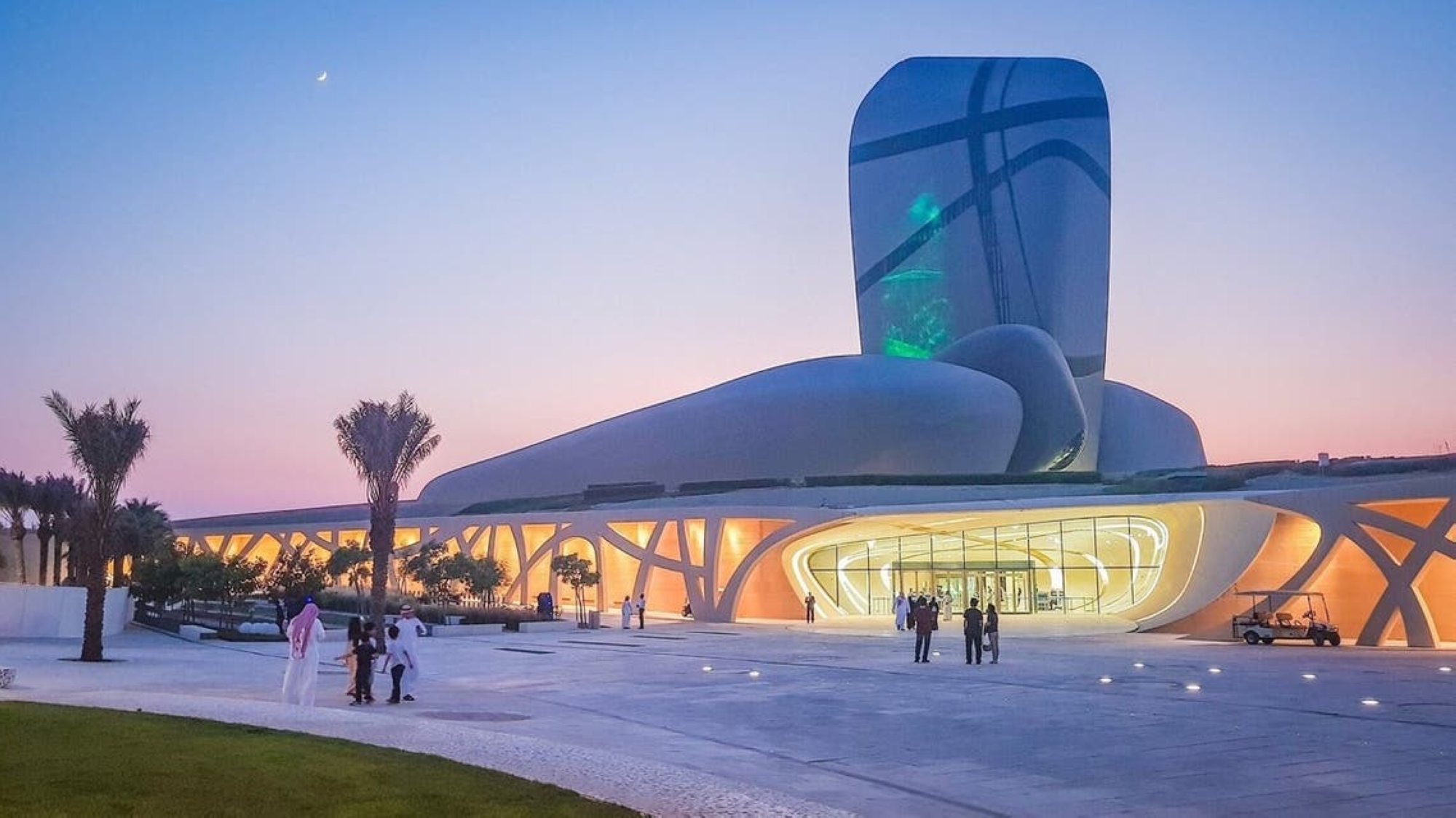
Saudi Aramco has shown a keen interest in thought and culture. Initially, its cultural programs were focused on its employees as part of its employee care strategy. One of the ways the company engaged with its employees and their social environment was through the launch of a television station. Additionally, its school-building program, which started with the Dammam School, contributed to educating and uplifting the community. The company publishes Al-Qafilah Magazine, a diverse cultural magazine that is released every two months. The establishment of the King Abdulaziz Center for World Culture (Ithra) is considered one of the company's most prominent sustainable and voluntary community initiatives in the field of knowledge and culture.
Television
Saudi Aramco launched a television station from Dhahran on September 16, 1957, with the aim of educating the company's employees. The channel offered a variety of programs in both Arabic and English, creating a space for education, awareness, entertainment, and enjoyment.
Education
In 1954, Saudi Aramco launched the Schools Construction Program for the children of its employees. It began with the establishment of the Second Dammam Elementary School, which was inaugurated by King Saud Bin Abdulaziz. The project later expanded to serve the community, with the company building around 130 schools where more than seventy thousand male and female students are enrolled.
Al-Qafilah Newspaper
It is a cultural magazine established in 1953 under the name "Qafilat Al-Zait" ("The Oil Caravan"). It is one of the oldest cultural magazines in Saudi Arabia. Published by Saudi Aramco every two months, with sixty-five thousand copies distributed to its readers within the company, across Saudi Arabia, and internationally. The magazine is characterized by a general documentary nature, through which it addresses several topics, including: education in Saudi Arabia, Hajj, industrial development in Saudi Arabia, and others. It also deliberately avoids controversy in its approach.
King Abdulaziz Center for World Culture (Ithra)
In the field of knowledge and culture, the King Abdulaziz Center for World Culture (Ithra) is the company’s most prominent sustainable community and volunteer initiative. The company proposed the idea of establishing the center during the seventy-fifth anniversary of its founding near the Prosperity Well site. The first commercial oil well in Saudi Arabia, as an extension of the knowledge capacity in the Kingdom, and in line with Saudi Arabia’s new direction of building a knowledge economy, to reduce dependence on oil.
Sustainability at Saudi Aramco
Saudi Aramco is a founding member of the Oil and Gas Companies Climate Initiative, and a member of: the International Petroleum Industry Conservation Association, the Petroleum Environmental Research Forum, and the World Bank initiative to eliminate conventional gas flaring completely by 2030. The company is working to achieve zero neutrality for scopes (one and two) and reduce greenhouse gas emissions in its operational work by 2050.
In 2022, Saudi Aramco announced the establishment of a sustainability fund worth USD1.5 billion to invest in technology that can support a stable and comprehensive energy transition. It is considered one of the largest venture capital funds in the world and an extension of the company’s efforts to reduce greenhouse gas emissions.
Related quizzes


